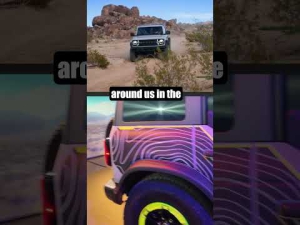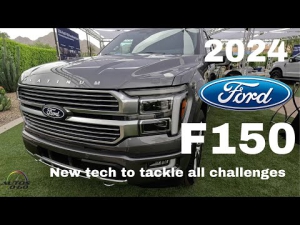Chevy SuperCruise vs. Ford BlueCruise: Which Cruise to Choose
Every auto magazine has said it a thousand times before, but we’ll say it again: there’s no such thing as a 100% self diving car (yet), just cars with self driving features. But Ford recently jumped into the hands-free driving arena, taking on the Chevy SuperCruise with its own BlueCruise software. Both systems aim to give the driver a hands-off experience and have been classified as Level 2 autonomous driving by SAE standards. But don’t be fooled, you’ll still be “driving” the car, even if your hands aren’t on the wheel.
SuperCruise and BlueCruise are very similar hands-free driving technologies
Both SuperCruise and BlueCruise use what’s called adaptive cruise control. Like your typical cruise control, it maintains the car’s speed, but unlike cruise control, it can also “adapt” to the traffic around you. When a car in front of you steps on its brakes, the adaptive cruise control will kick in and slow you down while maintaining a good following distance. All without any input from the driver.
The “hands-free” part comes from the lane keep assist systems. The car tracks the lines and automatically stays centered in your lane. Granted, this lane-assist only works on certain divided highways. Chevy and Ford both have over 200,000 miles of road mapped out in the US. But just because the driver isn’t steering doesn’t mean they can slack off.
Onboard both BlueCruise and SuperCruise capable vehicles are cameras capable of tracking the driver’s eyes. Sounds a bit dystopian, always being watched while you’re driving, but that’s not the point. It makes sure that the driver stays focused on the road, keeping their eyes forward and away from their phone. And the system can even see through sunglasses.
Tesla’s Autopilot doesn’t have any cameras watching, which is why you hear so many stories about drivers taking naps while in motion. Ford and Chevy’s hands-free systems, however, won’t be as easy to rig (not that you should attempt to).
SuperCruise is already available in selects Cadillacs

While Ford aims to sell 100,000 vehicles equipped with BlueCruise, such as the Mustang Mach-E and the Ford F-150, GM has been using the Chevy SuperCruise tech since 2018. First featured in the Cadillac CT6, the tech is also available on 2021 Cadillac CT4, CT5, and Escalade Models. And it will be featured in the Cadillac Lyriq, the all-electric SUV coming out in 2023.
If you already own a 2021 model year F-150 or Mustang Mach-E, the BlueCruise will be available for download later this year. That said, Ford recently took five F-150s and five Mustang Mach-Es on what they call “the mother of all road trips.” Spanning across Canada, BlueCruise was tested for over 500,000 miles in inclement weather and harsh road conditions. In other words, neither option is unsafe, but one has been tried and tested by consumers a bit longer.
GM sued Ford over the BlueCruise name

Speaking of being in the game longer, GM sued Ford over the name BlueCruise, arguing it infringes on their brand. Ford countered with the point that the word “cruise” is generally understood to be cruise control. And other automakers feature cruise-related names, such as the Hyundai Smart Cruise Control. According to RoadShow, GM wants to block Ford from using the name, but whether that effort falls flat or not is yet to be determined.
Semantics aside, both Chevy SuperCruise and Ford BlueCruise are similar technologies, tracking the driver and the road simultaneously. And each is a step in the right direction towards a fully autonomous future. But we’re not there yet.
RELATED: Don’t Expect Hands-Free Driving in These Ford F-150 Lightning Models
The post Chevy SuperCruise vs. Ford BlueCruise: Which Cruise to Choose appeared first on MotorBiscuit.







